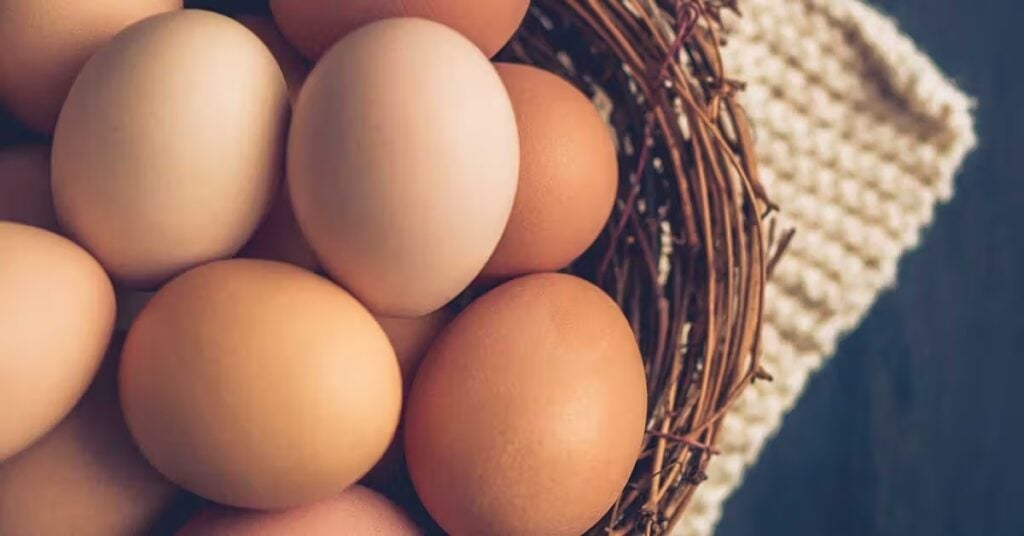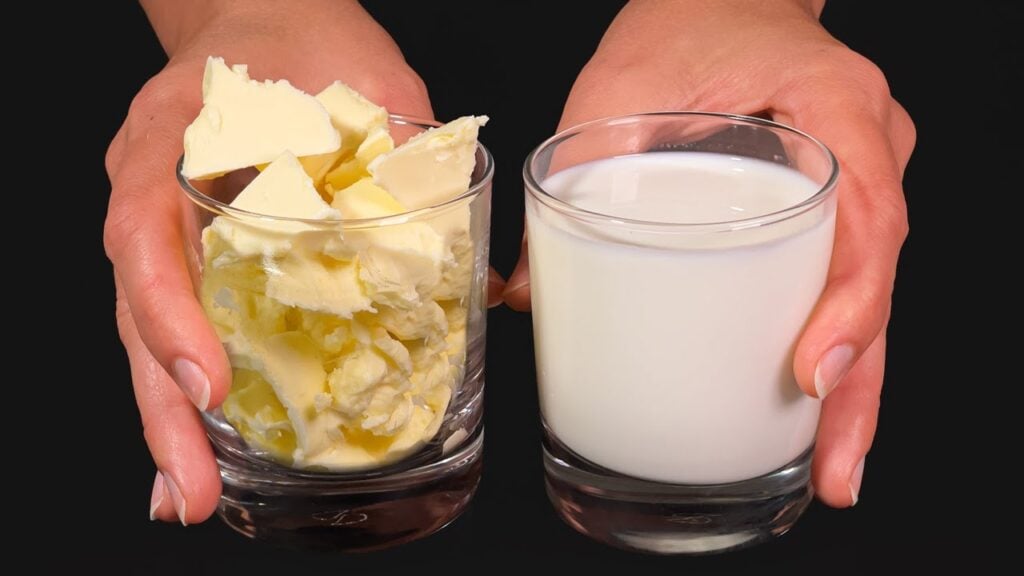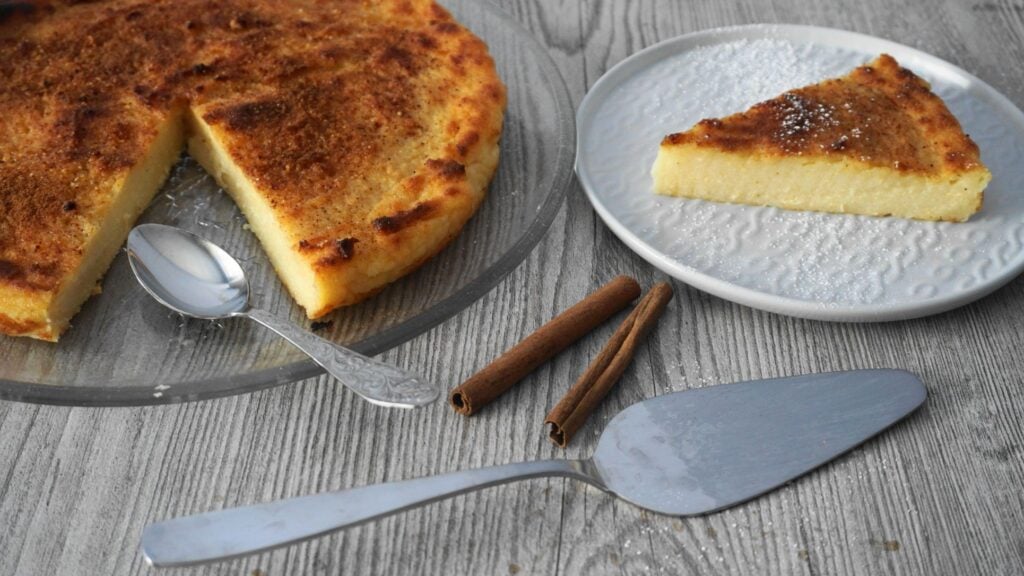Galatopita is a traditional Greek milk pie dessert that fills your home and your memories with the aromas of cinnamon, lemon and vanilla.
The creamy texture and balanced sweetness hide a whole science behind galatopita. From the semolina that thickens the cream to the eggs that give structure, each ingredient has its own role, creating a perfectly balanced pie.
The secret of semolina: the source of the creaminess
Semolina is a basic ingredient of galatopita. It comes from “coarsely ground” wheat and can coagulate the cream, giving it a solid texture.
When semolina is mixed with milk and heated, the semolina grains absorb the liquid and expand, creating a thick, velvety mixture. This process, known as starch gelatinisation, determines the consistency of the cream.
The semolina grains absorb the milk, trapping water in their starch, and thus turn the mixture into a thick cream. The amount of semolina used plays a crucial role in the final result.
Balance is key: enough semolina to thicken the cream without making it hard or dry. For the perfect galatopita, use fine semolina to achieve faster gelation but avoid a grainy texture.
The role of eggs: structure and stability

Eggs are another main protagonist of the galatopita. They contain proteins that, when heated, create a stable structure, giving the galatopita the right density.
The proteins coagulate as they heat, holding the gelatinised semolina together into a lattice. This property allows the galatopita to be cut easily but not fall apart.
It is important that the egg mixture is gradually added to the hot milk, so that it does not suddenly tighten and form clots.
Milk and butter: The rich taste

Milk and butter are elements that make galatopita aromatic and special. The milk provides the moisture needed to give the cream its velvety texture. The more aromatic the milk is, the better the final taste of the dessert will be.
Therefore, you can achieve an even richer taste by using goat or buffalo milk. After the cream has thickened, butter is added at the end of the process to give a rich, aromatic note and complete the experience.
The nutritional value of the ingredients

Galatopita is not only tasty but also nutritious. Milk is a source of calcium and proteins, which help strengthen bones and maintain muscle mass.
Eggs offer proteins of high biological value and are rich in vitamins, such as vitamin D, which is important for bone health.
Semolina, on the other hand, contains carbohydrates, which are necessary for energy production, as well as plant fibres that contribute to the good functioning of the digestive system.
The art of baking

Baking is a process that requires attention and precision. Bake in a preheated oven at 180°C for about 45 minutes until the dessert is golden brown and slightly puffed up.
Proper baking ensures that the custard will set but not dry out. The crust that forms on the surface from the mixture of egg, milk and the addition of a little sugar gives the perfect golden colour and the crispness that will make every bite enjoyable.
These changes are due to the Maillard reactions, which will once again exert their influence and determine the organoleptic character of the dessert in a unique way. The galatopita is the result of the perfect harmony of its ingredients, which interact in a unique way.
Understanding the science behind these simple ingredients can help us appreciate the favourite dessert even more, making us understand that baking is an art form that combines science with creativity and passion.
Click HERE for a galatopita recipe
Maria Papakonstantinou is a columnist for Cantina. Translated by Paul Antonopoulos.
READ MORE: Paragon Brewery: Craft beers and a taproom in Athens.
This post was originally published on here







